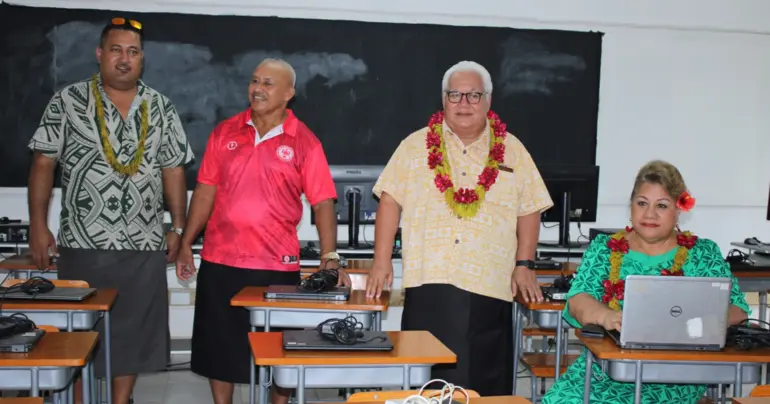University promotes Pacific regionalism
A lot has been said about what denotes successful regionalism in the Pacific, and more often the University of the South Pacific has been at the forefront of it.
“Yes, definitely, in the leadership you see a much greater role the university plays in the region,” outgoing vice-chancellor, Professor Rajesh Chand said, responding to the question on whether the university was the symbol of successful regionalism.
“We have got all the countries to sign the U.S.P. convention that recommits them to the university, reinforces their ownership.”
Prof. Chandra said the success of the university is evident in the growing interest of development partners in financing the initiatives of the university.
“New Zealand is thinking about increasing its aid, Australia has cut its overseas aid by $2-$3 billion in the past, it hasn’t reduced our funding.
“Australia is basically saying for the next six years or so, they’ll guarantee that level funding. In the meanwhile, we have picked up money from Japan, European Union significantly, some money from India, China, so we are running on $50 million a year from aid.”
He said the reputation of the university is so good that the Prime Minister of Papua New Guinea, Peter O’Neill, has signaled his country’s interest in joining the university.
“PM O’Neill first expressed it in the forum in 2012, and then he was in a State visit to Fiji recently and the dinner hosted by the Fijian Prime Minister, he just made the announcement that they will join USP and that the officials will do all the paper works and he will announce it in the forum in September in Nauru, but then he did not come to the Forum, so now we are probably expecting that next year.”
The university also ensures that it does not place too much burdens on governments in terms of finances.
“We have introduced the idea of soft financing, so ADB loans coming in. Because in the past if the government did not give money, we just say we can’t do anything but we changed all that. We are thinking of a four-storey building for Pacific TAFE, significant capital investment without relying on government funding. And we have on to a $200 million budget, without asking too much from the Government.
“For two years, we reduced the government contribution, they agreed to pay us $50 million and we said after the global financial crisis we reduced it 2 percent because we felt it’s a suggestion we should make. From 2007-2015 there was no increase in Government contribution, then we got a modest increase from 2016-2018, and now there have been an increase for 2019-2021.”
Prof. Chandra said USP believes in gender equality, gender based equality, and majority of the students are women throughout the campuses in the region.
“The proportions of women graduates in some countries are above 60 percent, Fiji is around 67 percent, so the women have moved way up. In Samoa and other countries more than 50 percent, except for Solomon Islands, which is a little less.”











